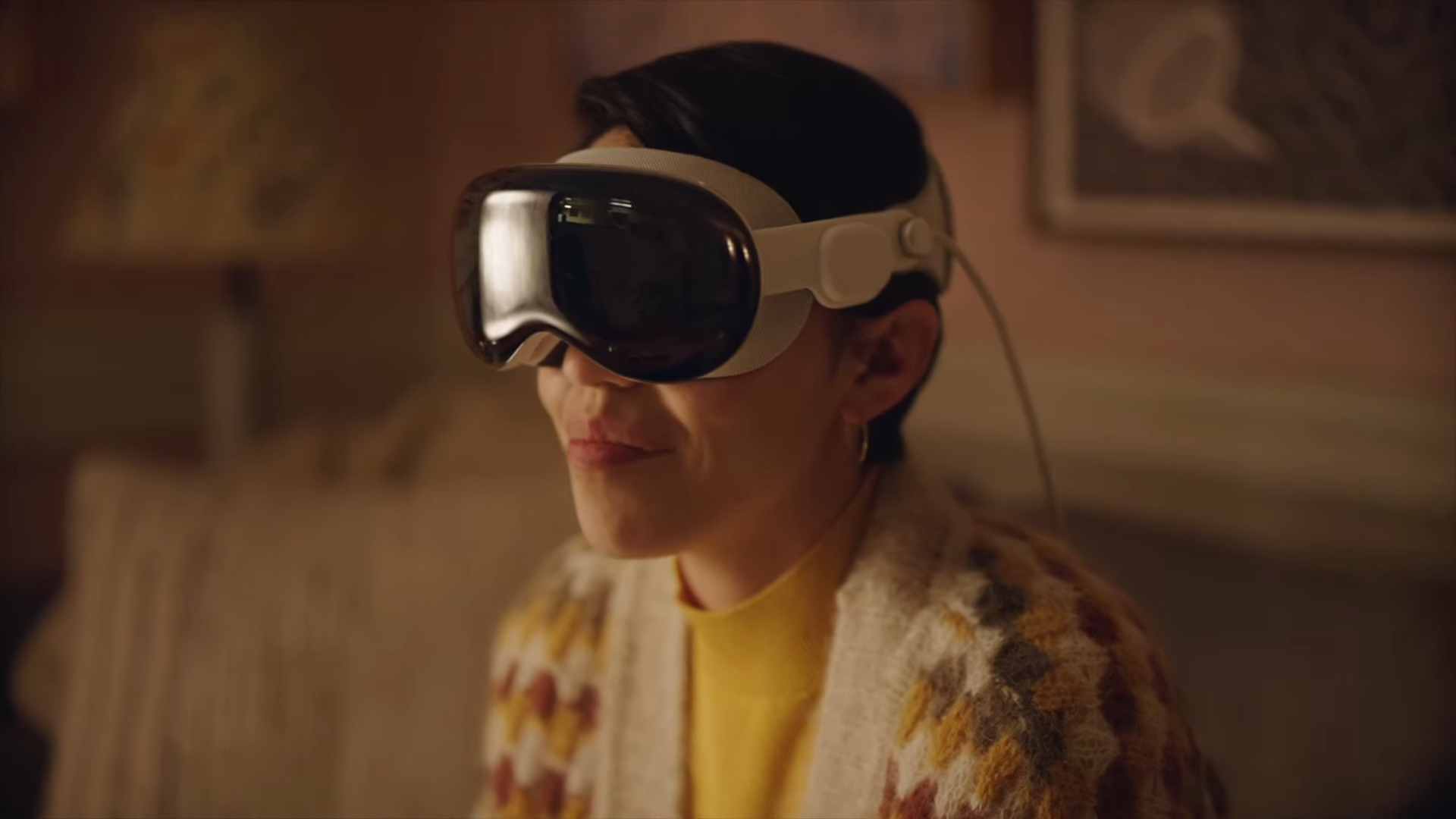Apple Vision Pro solves a problem nobody had — why it’s one Black Mirror episode too far
Apple, it’s not too late to turn the (virtual) car around.

The Apple Vision Pro is real and it’s fair to say the response has been mixed. My take is simple: there’s promise for the future, so long as the company learns from the mistakes it's seemingly walking into with this super pricey headset.
What do I mean? Well, the company can pack it full of impressive tech to make it one of the smoothest mixed-reality experiences you’ve ever seen (according to the hands-on reviews so far). But without anything genuinely useful, Apple’s heading for trouble. And let’s be honest, it’s a little creepy.
Why the Black Mirror comparisons?
It seems like the go-to comment for any tech that could be interpreted as remotely creepy is to make comparisons to Black Mirror. This is based in the same reason why I love the show so much — it uses current consumer tech and takes the idea just that one step further into dystopian hyperreality.
I can’t see us getting to a point where we rewind our memories to analyze them closely or anything, but social media apps now have Memories sections, and apps like 1 Second Everyday (a video journaling app that, as its name suggests, records one second of every day) exists.

Apple has largely been on the other side of this line, as none of its products have really crossed that threshold. That was until this week when the Vision Pro was announced. Not to say there’s anything nefarious about the headset, but come on. Seeing someone’s eyes through a front-facing OLED display? Being expected to wear this and record 3D video of your family? It’s a little weird.
Even down to all the promotional videos where Apple is setting the expectations of users wearing these throughout their day-to-day lives while packing a bag or playing with their kids.
Life lessons learned the hard way

First-gen Apple products often have a bumpy start. The first iPhone was overpriced and only supported 2G networks, which led to average sales. The first Apple Watch was slow and had half-baked software, which led to (you guessed it) average sales.
Sign up to receive The Snapshot, a free special dispatch from Laptop Mag, in your inbox.
I don’t think the Vision Pro will follow the same trajectory. I fear it could be a lot worse because it doesn’t actually have what I would call that usefulness factor to propel it forward.
When the first Apple Watch came around, you couldn’t help but question the point of it. Why do I need something on my wrist giving me the notifications from my phone when I could just get my phone out of my pocket? It made it seem a little redundant, but there were some elements that did make it useful.
At the moment, beyond the standard features you get from a VR/AR headset like gaming and watching immersive content, the ways to use the Vision Pro don’t give you those useful vibes — making it feel a whole lot more pointless at that $3,499 price.
So, what happens next?

It’s a tale as old as time when it comes to Apple products in a new category. The company throws everything at the wall to see what sticks in its initial attempt and then hones in on what people are actually doing with the tech.
Remember the Apple Watch announcement? Its health and fitness credentials only took up a few minutes of the keynote. Fast forward a couple of years and Cupertino realized that this was the key selling point — and it pivoted hard. Now, you don’t hear a single thing about other features — it’s all about monitoring your health and encouraging you to workout.
I think the same crystallizing moment is coming for the Vision Pro. In two years, I predict you’ll see Apple announce a headset that walks back a lot of these features, and focuses on what people actually use it for:
- Gaming
- Watching content
- Device continuity
With this focus, Apple can strip out the tech that enables the weirder features (like the whole seeing eyes through the glass and 3D video recording), which would, in turn, improve battery life and bring the cost down.
Apple may be the company to bring mixed reality to the masses, but the Vision Pro is not the device that will do it.

Jason brought a decade of tech and gaming journalism experience to his role as a writer at Laptop Mag, and he is now the Managing Editor of Computing at Tom's Guide. He takes a particular interest in writing articles and creating videos about laptops, headphones and games. He has previously written for Kotaku, Stuff and BBC Science Focus. In his spare time, you'll find Jason looking for good dogs to pet or thinking about eating pizza if he isn't already.
